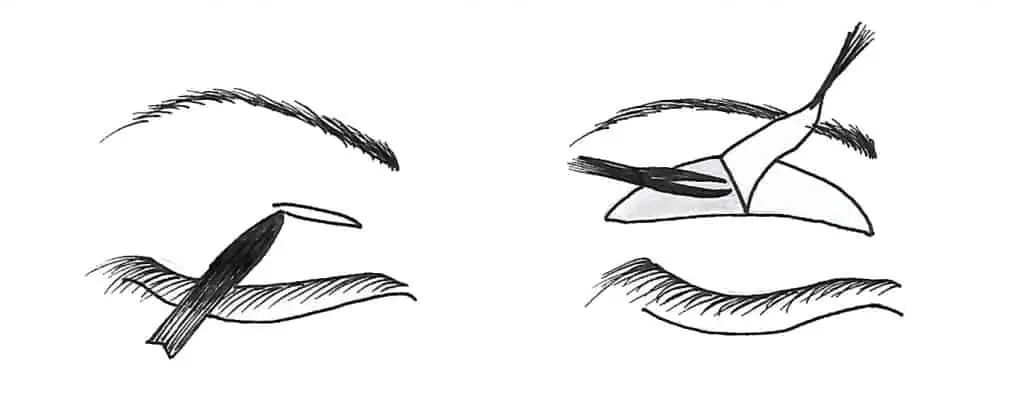BLEPHAROPLASTY
- Homepage
- AESTHETIC SURGERY
- Face
- BLEPHAROPLASTY
Blepharoplasty (Upper / Lower)
A Blepharoplasty procedure is carried out to correct the appearance of the eyes either due to fatty deposits or excessive skin which can cause sagging and in some cases impair vision.
As patients grow older the muscles around the area can become more lax, the eyelids and brows can begin to droop and permanent bags can begin to appear around the eyes. The aim of the procedure is to rejuvenate the area making the eyes appear more open and for females to allow a much smoother application of cosmetics.
- The procedure
- Risk & Complications
- Recovery
- FAQs
Surgery usually takes around 1 hour in theatre and can be carried out under general anaesthesia or local anaesthesia/sedation depending on the extent of the procedure and patients can usually return home the same day.
Depending on the area(s) of concern the procedure will be customised to fulfil the patients’ requirements. For Upper Blepharoplasty an incision is made above the eyelid within the natural crease and for Lower Blepharoplasty an incision is made below the lashes or sometimes within the eye itself. Excess skin will then be excised and any fatty deposits are then removed or repositioned after removal of some millimetres of muscle. The muscle and the incisions are then sutured.
Blepharoplasty surgery is a low risk procedure and complications are rare. However, it is important to be aware of the side effects associated.
Common side effects can include temporary double vision, blurred vision for a few days, temporary swelling at the corner of the eyelids, bruising, dry or watering of the eye and conjunctivitis, these complaints usually subside in the short term following surgery. Patients can also experience irritation of the eye shortly after surgery and are required to avoid wearing contact lenses for 2 weeks post-operatively.
In addition to the above complications, it is important to be aware that certain medical conditions increase your chances for an unfavourable outcome, including hypothyroidism, Graves’ disease, dry eye or lack of sufficient tears, high blood pressure or other circulatory disorders, cardiovascular disease, and diabetes.
Healing is a gradual process, but you should be able to read the day after your Blepharoplasty surgery. However, you won’t be able to wear contact lenses for about two weeks, and they might continue to feel uncomfortable for a while.
During the first two weeks, you can expect to experience tearing, sensitivity to light, and temporary blurring or double vision. Your progress will be closely monitored by your surgeon for the first week or two. The stitches will be removed a week after surgery. Any remaining swelling or discolouration begins to subside around the time your stitches are removed, and you’ll start to look and feel much better.
Most eyelid surgery patients feel ready to go out in public and back to work in a week, but this depends on your level of bruising. By then, depending on your rate of healing and your surgeon’s instructions, you’ll probably be able to wear makeup to hide any bruising that remains.
You might be sensitive to sunlight, wind, and other irritants for several weeks, so you should wear sunglasses and a special sunblock made for eyelids when you go out. Your surgeon will advise you to keep your activities to a minimum for three to five days, and to avoid more strenuous activities for about two weeks. It’s especially important to avoid activities that raise your blood pressure, including bending, lifting, and rigorous sports. You may also be told to avoid alcohol, since it causes fluid retention.
What’s the difference between Eyelid Surgery and a Brow Lift?
A Brow Lift raises drooping eyebrows and alleviates forehead wrinkles, while also lifting slightly sagging upper eyelids. Eyelid Surgery corrects more severely drooping upper eyelids, particularly if the eyelid skin needs to be trimmed in order to tighten the area. A Brow Lift also doesn’t address lower eyelid issues.
Does Eyelid Surgery leave visible scars?
The scars from an Upper Eyelid Surgery are hidden in the creases of the lids. A Lower Eyelid Lift may have a visible scar just under the lower eyelashes, but it is hidden by the lash line. If the incision is made on the inside of the lower eyelid, there is no visible scar.
How long before I can exercise after Eyelid Surgery?
We ask that you refrain from strenuous exercise or heavy lifting for about 3 weeks.
Can I sleep lying down right after Eyelid Surgery?
Yes, but it’s better if you sleep on your back with your head elevated, and you might want to sleep upright for the first couple of nights.
How long will my Eyelid Surgery results last?
They’ll last a long time, but the ageing process does continue. Depending on your age when you have the surgery, you may need revision Upper and/or Lower Eyelid Surgery at some point in your life.

